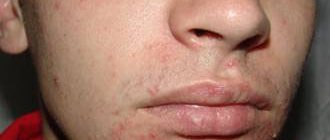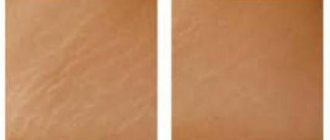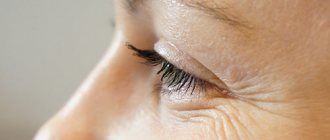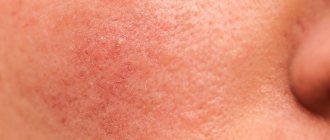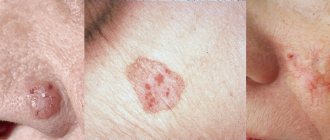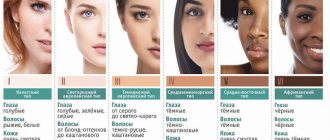An indicator of good health has always been the condition of the skin and mucous membranes. The condition of our skin is influenced by both aggressive environmental factors and internal processes in the body.
Our skin immediately signals a problem with irritation, rashes, comedones and other cosmetic defects. Proper and regular skin care will help prevent their occurrence.
One of the common cosmetic problems of clogged pores is comedones or acne. Acne is caused by the skin secreting sebum, which clogs the pores or hair follicle, which can eventually cause a cyst.
Comedones - what are they?
Comedones are signs of acne or acne - derived from the Latin language from acne comedonica. They are deep subcutaneous rashes - black and white dots that appear on the skin due to clogged pores.
Comedones on the face are a common problem for oily and combination skin types. Against the backdrop of excessive work of the sebaceous glands, blockage of pores and sebaceous ducts occurs - excess sebum mixes with dead skin cells, remnants of makeup and external impurities, forming a sebaceous plug.
Important(!): without timely care, an inflammatory element may occur at the site of the comedone: the sebaceous plug creates an ideal environment for the proliferation of acne bacteria, which provoke inflammation.
The main causes of acne and comedones:
- improper skin care: neglect of hygiene rules, insufficient cleansing of the skin, use of cosmetics that are not suitable for your skin type;
- mechanical damage to the skin: chemical peeling, exfoliation, self-squeezing pimples;
- excessive production of sebum;
- consuming large amounts of sugar and fats;
- preference in the diet for dairy products;
- allergic reactions.
There are two types of acne: closed and open:
- Closed comedones are white, small, located under the skin in the form of nodules, and tend to become inflamed, forming pimples.
- Open comedones are black rashes located on the surface at the base of the hair follicle and rarely become inflamed.
Types of comedones
In dermatology, there are two types of comedones, depending on the depth of their formation:
- Open comedones
are the usual blackheads - superficial blockage of pores with sebum mixed with external impurities and makeup residues. Open comedones acquire their characteristic dark color due to the oxidative reaction of the sebaceous plug and oxygen. - Closed comedones
are white subcutaneous nodules that look like pimples without purulent contents. They arise against the background of an imbalance of sebum regulation: when excess sebum, mixed with toxins and the keratinized layer of cells, blocks the deep sebaceous ducts and the mouths of the hair follicles, accumulates in the pores and creates a kind of compaction or cyst - a subcutaneous sebaceous plug.
Say NO! comedones: care for problem skin
Iontophoresis is a special procedure by which the skin is exposed to pulses of low-voltage galvanic current. Under the influence of current, the properties of medicinal compounds are enhanced and penetrate into the deep layers of the epidermis, affecting comedones from the inside. An effective type of iontophoresis is the disincrustation procedure. This method allows you to quickly, deeply and atraumatically cleanse the skin of impurities, sebaceous plugs and black plugs, thereby normalizing the functioning of the sebaceous glands. Its action is to influence the skin with galvanic current, which, as with iontophoresis, enhances the effect of the compositions.
perform disincrustation at home. To do this, you should pay attention to the multifunctional facial skin device Bio Sonic 1007 from the famous manufacturer Gezatone. With its help, you can perform many useful procedures without leaving your home: ultrasound peeling, micromassage, phonophoresis, disincrustation, ionic galvanic cleansing, blue current chromotherapy and microcurrent therapy. As a result of using the device, the skin becomes noticeably cleaner, tighter, youthful, smooth, beautiful and radiant. Ideal in one word.
To enhance the effect of the device, you should use a special lotion for ultrasonic facial cleansing “Desincrustant” from the Beauty Style brand. Thanks to its active ingredients, the product helps to better cleanse the skin of sebum and comedones, relieves inflammation, restores skin tone, tightens pores, removes impurities and toxins, and prevents inflammation and irritation.
Device for ultrasonic cleaning and lifting of facial skin Bio Sonic 1007, Gezatone
The most advanced device for ultrasonic skin cleansing...
More details
Lotion for ultrasonic facial cleansing “Desincrustant”, Beauty Style, 250 ml
The active drug prepares the skin for procedures...
More details
Chromotherapy is an innovative technique that affects the skin with rays of different colors. Depending on the problem, the cosmetologist selects a specific light and its intensity. Chromotherapy improves the supply of oxygen to tissues, improves local immunity, enhances metabolism, stimulates regeneration processes and cleanses the skin of various inflammations.
Darsonvalization is an effective method of using the Darsonval apparatus, which began to be effectively used to treat various diseases at the end of the 19th century. Much time has passed since that moment, Darsonval’s devices have become more modern and multifunctional. The effect on the skin occurs due to high-frequency pulsed current. With the help of darsonvalization, you can perfectly solve the problem of oily skin, enlarged pores, comedones, and acne. The current relieves inflammation, reduces the number of rashes and improves skin condition.
Localization of comedones
Most often, comedones on the face are found in people with oily and combination skin with a tendency to acne. The more sebum is secreted, the higher the risk of clogging pores and forming a sebaceous plug.
Black comedones can also occur in people with dry and normal skin types. Subcutaneous whiteheads are the most common signs of acne due to increased oily skin.
Such imperfections are predominantly localized in the T-zone of the face - on the forehead, but on the nose and chin - areas of the greatest accumulation of sebaceous glands. Often comedones appear on the back, shoulders or chest - the sebaceous glands in these areas are also active, and the pores are enlarged.
How does retinol work for acne?
Points of application of retinol and its derivatives for acne:
FOLLICULAR HYPERKERATOSIS
Retinoids, like AHA acids, are able to break the bonds between keratinocytes, stimulating their exfoliation, inhibit the excessive proliferation of the ductal epithelium, thereby cleanse the pores on the face and eliminate their blockage.
CLOSED COMEDONS
Through the hair follicle, retinoids are able to penetrate right up to the ducts of the sebaceous glands, where they also stimulate exfoliation and elimination of accumulated sebum, which stretches the sebaceous glands, turning them into retention cysts.
Result : a large number of dead cells do not accumulate in the ducts and their removal to the outside improves, which removes the blockage of the duct - sebum accumulated in the gland comes to the surface of the skin.
INFLAMMATION
Retinoids are antioxidants that further reduce the production of proinflammatory cytokines and other inflammatory factors (eg, IL-1β, TNF-α, and nitric oxide NO).
Important : inflammation is recognized as a key factor provoking the severity of the acne process, and, therefore, the main starting point for acne therapy.
PATIENT
Retinoids indirectly inhibit the proliferation of P. acne bacteria, preventing the formation of antibiotic resistance in bacteria that form skin microbiologists.
IMMUNE FUNCTION OF THE SKIN
Retinoids block important inflammatory pathways such as AP-1, as well as leukocyte migration and toll-like receptors. In addition, retinoic acid (one of the forms of retinol, formed inside the skin during the transformation of retinol) affects Langerhans cells - skin macrophages, increasing their readiness for phagocytosis and migration to the site of inflammation.
PREVENTION OF POST-ACNE
According to clinical observations, early use of retinoids to correct acne minimizes the risk of scarring.
Also, topical retinoids reduce the risk and clinical manifestation of post-acne hyperpigmentation. The higher the dose of topical retinoids, the greater the preventive effect.
What causes comedones: the main reasons
Alexander Prokofiev, a dermatovenerologist, expert of the La Roche-Posay brand, talks about the possible causes of comedones:
- Incorrectly selected care, for example, some compositions of cosmetics can clog pores, excessive frequent esfoliation with scrubs and peels can disrupt the hydrolipid mantle of the epidermis, to which the skin will react with increased sebum secretion.
- Insufficient or excessive cleansing of the skin: in the first case, residues of pollution and decorative cosmetics clog pores and cause inflammation. In the second, the skin barrier is damaged, dries out, peels off - the keratinized layer of cells mixes with sebum and creates a sebaceous plug in the pores.
- Some diseases, for example gastrointestinal disorders, as well as hormonal changes in the body can trigger rashes.
- Touching your face with your hands stimulates the sebaceous glands, which increases the risk of comedones and other imperfections.
- Synthetic clothing does not allow the skin to breathe; the skin reacts with increased sebum and sweating, which also causes clogged pores in the back, shoulders, neck, and chest.
- Poor nutrition and non-compliance with the drinking regime negatively affect the condition of the epidermis: insufficient drinking regime affects the face with dryness, flaking, unbalanced nutrition and bad habits disrupt the functioning of the sebaceous glands.
- Some cosmetics may contain ingredients that clog pores. If your skin is prone to imperfections, choose cosmetics labeled “non-comedogenic” and “for oily problem skin.”
In what cases should you consult a doctor for treatment?
If there are no visible results from home care in combination with cosmetic procedures, you should consult a dermatologist. After an in-person examination and based on test results, the doctor will select individual drug treatment using, for example, hormonal drugs or antibiotics.
How to get rid of comedones: cosmetological methods
The main treatment for acne should be medication, but cosmetic methods can be used as an auxiliary therapy. They can also be used when the disease is in remission, to reduce the risk of relapse, eliminate signs of post-acne and care for problem skin.
The following methods are used in cosmetology to treat acne:
- ultrasound;
- phototherapy;
- mesotherapy;
- plasma therapy;
- chemical peeling;
- cryotherapy, etc.
A set of methods allows for targeted local effects on hair follicles and sebaceous glands. The purpose of cosmetic procedures is:
- skin sanitation;
- strengthening its barrier function;
- restoration of protection against bacteria;
- exfoliation of cells of the stratum corneum;
- sebum evacuation;
- normalization of keratinization processes.
Cosmetic procedures help reduce the likelihood of scars and age spots appearing during the healing period of acne. The result of their implementation is also a decrease in the colonization of pathogenic bacteria.
Although scars do not remain after comedones, they may appear due to squeezing out the rash, in which case laser resurfacing, diamond dermabrasion, and injection procedures may be recommended.
Cosmetology procedures for removing comedones in the salon
A corrective home routine can be supplemented with salon beauty treatments on a regular basis or courses. Procedures and salon care are selected individually by a cosmetologist based on the type, condition and needs of your skin. Aesthetic procedures do not replace the basic steps of regular home care: daily cleansing, toning, moisturizing and mattifying will help oily, problem skin stay clear and look healthy for a long time.
List of salon treatments for comedones:
- Cleaning (mechanical, ultrasonic, hardware);
- Peels of various types and depths of exposure (superficial, medium, deep);
- Phototherapy – the procedure reduces acne, smoothes post-acne (pigmentation and scars);
- Biodermabrasion or Microdermabrasion (resurfacing) - procedures fight hyperkeratosis and enlarged pores, improve microcirculation, help skin cells regenerate faster, reduce post-acne, and are suitable for treating non-inflammatory forms of rashes.
